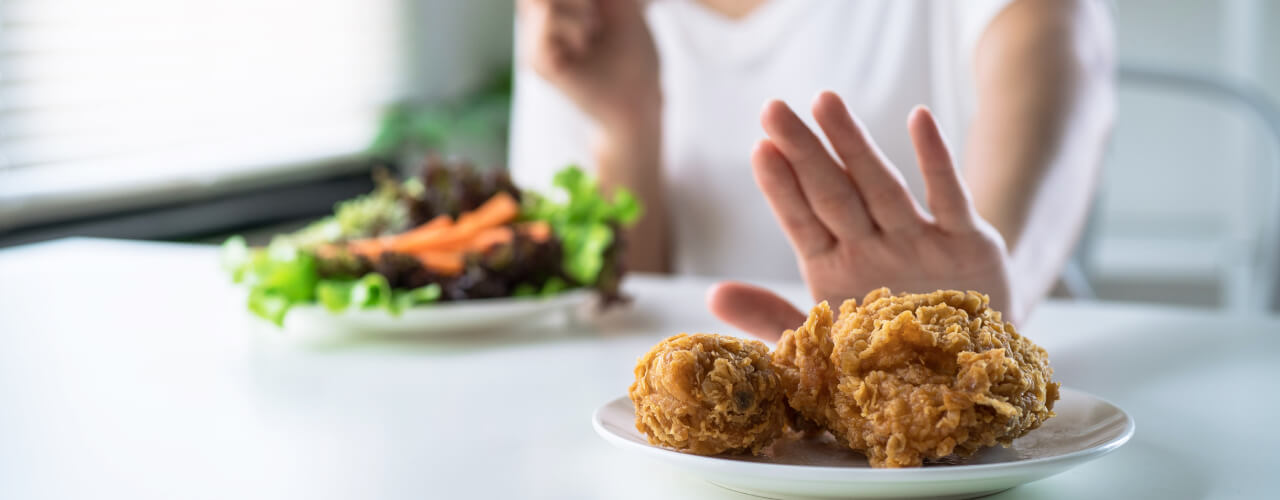The food you eat can have a tremendous impact on your energy and your waistline. What's harder to remember is that your nutritional choices can impact your joint pain, too!
At our physical therapy clinic, we advocate for a holistic approach to improving acute or chronic pain conditions. To your physical therapist, you're not just a diagnosis or collection of symptoms. You're someone that could benefit from a range of techniques and lifestyle interventions, including dietary changes, as a way to promote long-lasting relief. Call TheraFit™ to schedule an appointment today!
3 Ways Diet Impacts Your Pain
Have you ever wondered how your food choices could be influencing your acute or chronic pain condition? Here are three ways diet plays a role in your pain relief (or lack thereof):
- Certain foods promote inflammation in the body. Inflammation is a normal part of your body's immune system response and helps protect your body against things like illness or injury. In acute injuries, inflammation is an essential part of healing. But if inflammation lasts for too long, such as in the case of arthritis, tissue and cellular damage can occur. Inflammation also is a major factor in the experience of pain. It turns out that different types of foods can worsen inflammation and therefore may increase your pain. Pro-inflammatory foods can even harm the friendly bacteria in your gut, known as the microbiome (often called the "forgotten organ"). This can impair nutrient absoprtion and further disrupt your immune system since your gut and immunity are closely linked.
- Eating the right type of foods gives your body the raw material it needs for health. Your tissues, including joints, tendons, muscles, and nerves, are constantly being re-built. The body relies on nutrients like vitamins, minerals, fatty acids, and antioxidants to provide the "building material" needed to make these tissues and ensure the re-building process goes smoothly. If you don't provide your body with these key materials, then the ability of your body to repair itself may be limited.
- Eating the right amount of food promotes optimal function. Eating too many calories can lead to weight gain, and researchers now know excessive body fat promotes inflammation. Excessive weight also increases the strain and stress on your joints and can raise the risk of health conditions often linked to pain, including fibromyalgia, arthritis, degenerative disc disease, and diabetes. On the other hand, if you don't eat enough food, then your muscles and tissues may lack the energy needed to grow, repair, and regenerate themselves. Under-eating may also lead to fatigue and affect your ability to safely exercise or participate in things like physical therapy.
Hone Your Pain-Free Palate By Choosing (And Avoiding) These Foods
Our physical therapy staff encourages our patients to consult with dietitians or other professionals for more customized and advanced nutritional support. But we're also happy to provide some basic guidelines that can optimize the well-earned results you get from working with a physical therapist.
The first tip: eat real food! Think minimally processed, nutrient-dense, diverse, and delicious:
- Fruits and vegetables (fresh, frozen, or even canned are all great—just watch for additives)
- Quality protein like eggs, lean meat, fish, and poultry
- Legumes, nuts, and seeds
- Fermented foods like tempeh, sauerkraut and kimchi (these are loaded in gut-healthy probiotics)
The key is to select foods that you enjoy eating so that making healthier diet choices is sustainable and simple. Our physical therapy team encourages our patients not to get bogged down by the latest fads and trends. Just start with the basics—plants, protein, and healthy fats—and go from there.
Another tip? Learn how to cook! Cooking at home can save you money and helps you better control what goes into your food. If pain makes it difficult to cook, a physical therapist can educate you about important things like activity pacing or home modifications that will make you more successful in the kitchen.
In addition to food, don't forget the water! You need great hydration every day to help your tissues stay healthy and flush out harmful toxins and waste products from your system. Staying well-hydrated boosts circulation enhances joint lubrication, eases muscle cramps, supports spinal disc health, alleviates headaches, and more.
Some people also find that taking certain supplements, including fish oil or chondroitin and glucosamine, helps alleviate their pain and improves well-being. The research on these supplements is inconclusive, and not all supplements were created equal. So, before taking any new supplements, chat with your primary care doctor first.
Finally, what to avoid? According to the Arthritis Foundation, certain foods and food ingredients may promote inflammation in the body and therefore exacerbate or prolong chronic pain. These foods include:
- Refined sugar
- Alcohol
- MSG (a preservative often found in fast foods)
- Gluten (a protein found in grains like wheat, barley, and rye)
- Casein and lactose (a protein and sugar, respectively, found in dairy products)
- Saturated fats
- Refined carbohydrates (think crackers, candy, pasta, bread)
- Trans fat
- Vegetable oils
- Non-caloric artificial sweeteners
You may choose to enjoy certain "treats" in moderation, like sweets or adult beverages. Just be mindful of how much and how often you're consuming them. Eating a healthy protein-filled snack and drinking a lot of water before a "treat" can help you control your portions.
Ready to Toast to Your Health and See How Better Nutrition Can Improve Your Pain?
Looking for more ways to holistically boost your health and alleviate your pain? Contact TheraFit today to schedule an appointment with an experienced physical therapist who can help your body and mind thrive using a customized selection of drug-free, non-invasive, and whole-person techniques.

